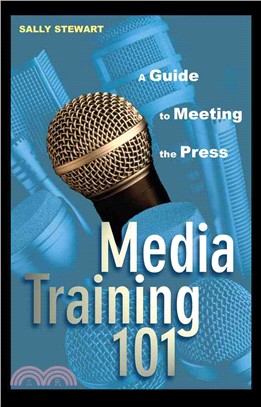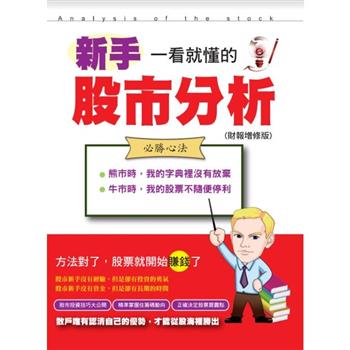| FindBook |
有 1 項符合
MEDIA TRAINING 101:A GUIDE TO MEETING THE PRESS的圖書 |
 |
MEDIA TRAINING 101:A GUIDE TO MEETING THE PRESS 作者:Stewart,Sally 出版社:John Wiley & Sons Inc 出版日期:2003-09-29 語言:英文 規格:15.9 x 23.5 x 2.5 cm / 普通級/ 雙色印刷 / 初版 |
| 圖書館借閱 |
| 國家圖書館 | 全國圖書書目資訊網 | 國立公共資訊圖書館 | 電子書服務平台 | MetaCat 跨館整合查詢 |
| 臺北市立圖書館 | 新北市立圖書館 | 基隆市公共圖書館 | 桃園市立圖書館 | 新竹縣公共圖書館 |
| 苗栗縣立圖書館 | 臺中市立圖書館 | 彰化縣公共圖書館 | 南投縣文化局 | 雲林縣公共圖書館 |
| 嘉義縣圖書館 | 臺南市立圖書館 | 高雄市立圖書館 | 屏東縣公共圖書館 | 宜蘭縣公共圖書館 |
| 花蓮縣文化局 | 臺東縣文化處 |
|
|
- 圖書簡介
Written by a seasoned journalist and public relations professional, Media Training 101 is your essential guide to handling the news media. A former USA Today reporter and consultant to major companies, Sally Stewart leads you through every step in developing a communications blueprint and a strategic public relations plan to support it. She shows you how to communicate effectively with the media in any given circumstance and how to control the way your company is portrayed in the media. Each chapter includes vignettes, anecdotes, and real-life case studies that help you know what to expect.
- 作者簡介
SALLY STEWART is a former news reporter at USA Today and ad hoc commentator for CNN as well as a seasoned public relations expert. Since 1996, she has worked as a communications consultant for a variety of public companies, private enterprises, and nonprofit organizations. Today, she heads her own consulting group, SA Stewart Communications, headquartered in Santa Monica, California. She appears frequently on TV current affairs programs. For more information, visit her web site at www.mediatraining101.com.
- 目次
PREFACE.
INTRODUCTION.
PART ONE: Understanding the Media.
CHAPTER 1: Foundational Rules for Media Success.
CHAPTER 2: How Journalists Think and Behave.
CHAPTER 3: Responding to Journalists.
CHAPTER 4: What Is News?
PART TWO: Practice Facing the Media.
CHAPTER 5: Key Message Point Workshop 65
CHAPTER 6: Lethal Mistakes: The Dirty Dozen 73
CHAPTER 7: Playing the Interview Game and Winning.
CHAPTER 8: Putting the Organic Keyword Method to Work.
CHAPTER 9: Key Message Point Practice Questions.
PART THREE: Giving a Great Interview.
CHAPTER 10: Interviews: What Is What and Who Is Who.
CHAPTER 11: Things You Should Never Say to a Reporter.
CHAPTER 12: When Things Go Wrong.
CHAPTER 13: Dress for Media Success.
PART FOUR: Implementing Media Training on the Fly.
CHAPTER 14: When the Media Just Shows Up.
CHAPTER 15: Crisis Control.
CHAPTER 16: How to Write and Review a Press Release.
CHAPTER 17: How to Pitch Your Company’s Story.
CHAPTER 18: How to Hire PR That Works.
CHAPTER 19: How to Create a Stellar Press Kit.
CHAPTER 20: Media Training and the World Wide Web.
CHAPTER 21: PR Lessons from Law School.
CONCLUSION.
GLOSSARY.
ACKNOWLEDGMENTS.
INDEX.
ABOUT THE AUTHOR.
|










